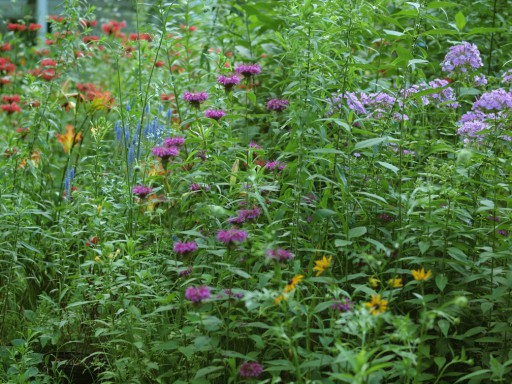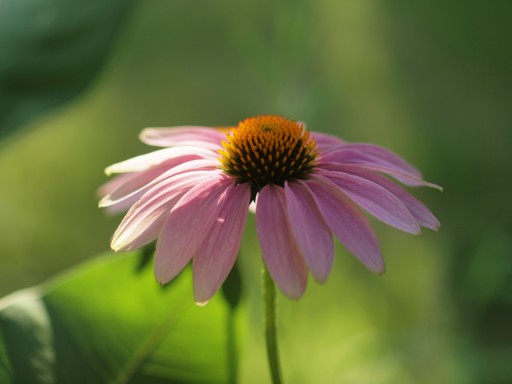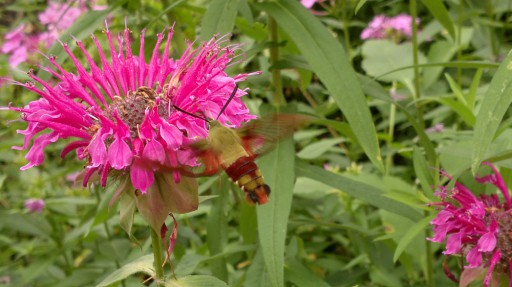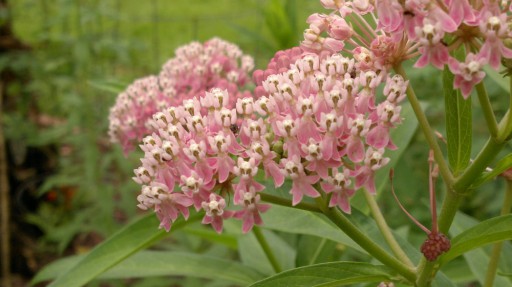Daylilies and monarda form the backbone of my summer perennial garden, supported by phlox and echnicea in sun; and astilbe in shade. Additionally, the black-eyed susans are coming in, and this year milkweed, swamp milkweed, joe-pye, and Queen of the prairie (all pink flowers) made a significant appearance for the first time. Hostas, those purple spikey things (veronica), liatris, shasta daisies, pink malva also contribute to the show, as do two varieties of queen anne's lace—the more open version is an alien asian variety, which I gather is considered invasive, but I like having both.
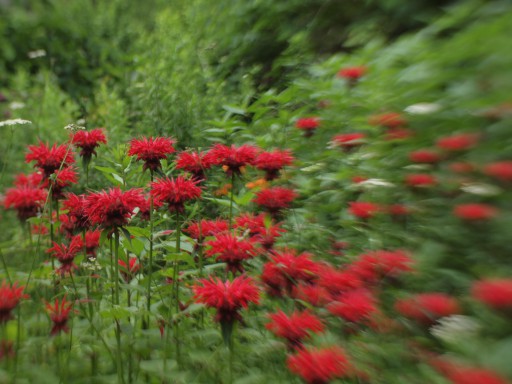
Another shot of the monarda, taken at the beginning of the month, with the lensbaby, obviously. (9jul as opposed 22jul)
In contrast to last year's draught this year it's rained so much I've barely had to water my pots. (The veronica, frex, is sitting in a pot, waiting to be planted.)
The monarda is loving all that rain. The scarlet monarda I thought had died is doing great. In fact, I thought the joe-pye weed and a lot of the milkweed was dead, but actually it was just slow to come up. And all the rain means the yard has turned into a jungle, so I've gotten pretty aggressive ripping out (or in some cases cutting back) ‘semi-weeds- —wild carrot, goldenrod, asters, and the like. It will mean less of a fall show, but it means I can actually see most of the garden.
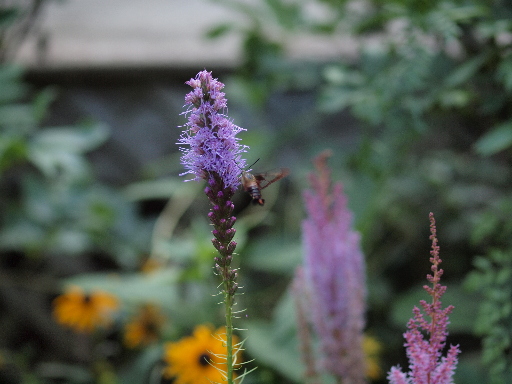
hummingbird moth supping on liatris. Astilbe and black eyed susan in the background. This is ‘deck’ bed.
Unless otherwise noted, text, image and objects depicted therein copyright 1996--present sylvus tarn.
Sylvus Tarn